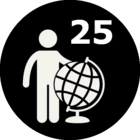So, I was very excited about the new feature "computer vision" after attending the FME World Tour earlier this year. Finally I can get FME to do the same for me as Google Photos, namely find objects in a large set of photos.
Hugely dissapointed when I actually started looking into this. VERY LITTLE documentation. Found this blog post though: https://www.safe.com/blog/2019/01/fme-does-computer-vision/
I cannot even get the GUI to mark objects in my photos to run. After a little time on Google I can see that I'm not alone... Many having troubles both with preparing photos and using the transformers.
Really Safe Software, using this as one of the new key features for 2019 and it seamingly does not even work properly...
Please, can you publish some proper documentation and examples like you always do. I will not waste any more of my time until I now this works and have a proper documentation/example to go from.... @daleatsafe?
Best regards,
Atle









